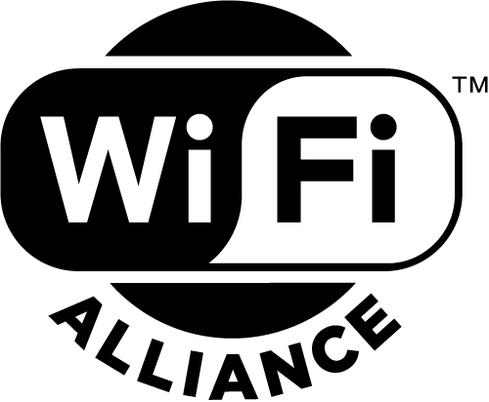For any industry, January offers a time for reflection -- the opportunity to look back and analyze the previous year in order to apply lessons learned to the 12 months ahead. IT is no different. But while cloud computing, virtualization and big data have now become par for the course within almost any enterprise, the technology that powers these critical functions has been largely overlooked over the past year.
For example, the fact that WiFi has become so ubiquitous to the point that most people don’t even notice it until it’s unavailable is a true testament to the technology’s durability. However, in 2014, the WiFi industry witnessed huge advancements, with global initiatives taking place to make seamless connectivity a reality in cities and businesses around the world.
For IT professionals, this new, “any time, any place” connectivity represents an inflection point. The question you should be asking is how, not if, your company can take advantage of the opportunities afforded by WiFi enhancements.
Increased WiFi deployments are fueling connectivity expectations, and industries that don’t rise to the challenge run the risk of becoming irrelevant in the eyes of sophisticated consumers. For the IT department, this means an even greater role in your company’s strategic roadmap, as executives increasingly look for innovative ways to offer value to both customers and employees through WiFi.
A great example of this value is in the retail industry, where in-store WiFi is not only keeping customers in the store longer, but actually factoring into many consumers' minds when they decide in which store to shop.
For instance, when you think of a traditional retail shopping experience, you imagine customer service representatives there to greet you and meet your needs. Today, the shopper has evolved to be more independent and enjoys doing his or her own research, rather than fully relying on the customer rep’s advice on price and product popularity. The connected shopper is here, and a recent survey from Wi-Fi Alliance and Wakefield Research found that 48% of consumers are more likely to shop in a retail store that provides wireless Internet, while more than a third use their mobile device to research a product review while shopping.
In-store WiFi is just one way to implement a WiFi strategy, and as the connected shopper continues to takes shape, IT professionals should see WiFi as a benefit for their businesses to offer.
 It’s clear from the data that WiFi is not just “nice to have;” it's a key part of the everyday experience. Our collective desire for constant connectivity is providing even more incentive to offer WiFi in user-friendly, reliable ways. And 2015 will see additional deployments of advanced, high-performance WiFi networks that take the user experience to new levels. The Wi-Fi Certified Passpoint program aims to help do just that: Enabling a user’s device to connect to WiFi seamlessly across multiple locations without having to login to networks repeatedly.
It’s clear from the data that WiFi is not just “nice to have;” it's a key part of the everyday experience. Our collective desire for constant connectivity is providing even more incentive to offer WiFi in user-friendly, reliable ways. And 2015 will see additional deployments of advanced, high-performance WiFi networks that take the user experience to new levels. The Wi-Fi Certified Passpoint program aims to help do just that: Enabling a user’s device to connect to WiFi seamlessly across multiple locations without having to login to networks repeatedly.
Mobility is a huge part of the WiFi story, but 2015 will see other applications of WiFi technology, such as advancing the Internet of Things. “The Internet of Things will fundamentally change the way the world interacts, transforming everyday objectives into intelligent, data-driven solutions for real problems, and what’s powering the Internet of Things is ubiquitous, easily accessible WiFi," said Carlos Codeiro, a director on the Wi-Fi Alliance Board.
Wi-Fi Alliance refers to this market as the Internet of Everything, because along with connecting devices to one another, WiFi brings the value of a bigger connection. More to the point, WiFi’s well-known interoperability and user experience means we can use the devices and technology we love, without ever giving thought to the connections taking place behind the scenes or worrying about compatibility problems. As Wi-Fi Allliance VP of Technology Greg Ennis explained in his recent blog post, Wi-Fi satisfies a range of Internet of Everything connectivity requirements.
It’s clear that connectivity expectations have changed and IT professionals must help their businesses find ways to meet the rising demands for easy-to-use, high-performance connectivity that delivers a great user experience. The start of the year marks a time to look forward to advancements, and evaluating your WiFi strategy should be at the top of your CIO’s list for 2015.






 It’s clear from the data that WiFi is not just “nice to have;” it's a key part of the everyday experience. Our collective desire for constant connectivity is providing even more incentive to offer WiFi in user-friendly, reliable ways. And 2015 will see additional deployments of advanced, high-performance WiFi networks that take the user experience to new levels. The Wi-Fi Certified Passpoint program aims to help do just that: Enabling a user’s device to connect to WiFi seamlessly across multiple locations without having to login to networks repeatedly.
It’s clear from the data that WiFi is not just “nice to have;” it's a key part of the everyday experience. Our collective desire for constant connectivity is providing even more incentive to offer WiFi in user-friendly, reliable ways. And 2015 will see additional deployments of advanced, high-performance WiFi networks that take the user experience to new levels. The Wi-Fi Certified Passpoint program aims to help do just that: Enabling a user’s device to connect to WiFi seamlessly across multiple locations without having to login to networks repeatedly.

